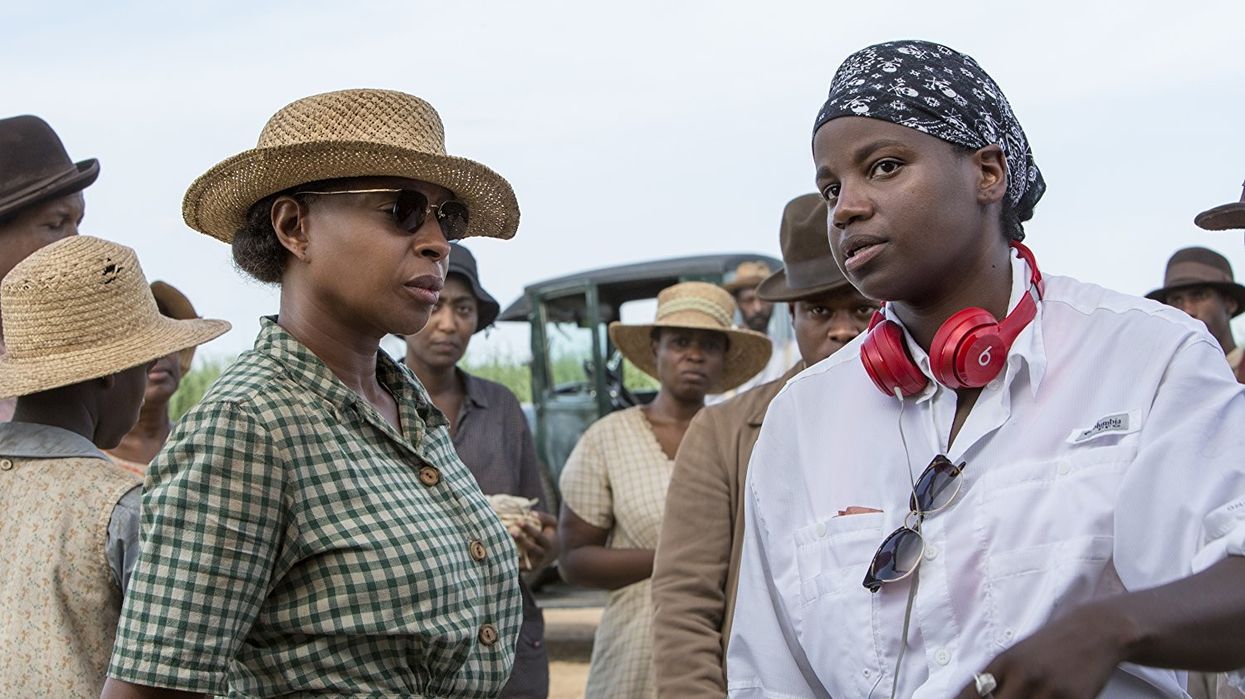3 Screenwriting Techniques Dee Rees Uses to Craft Believable Characters
Discover how the Oscar-nominated writer/director of 'Mudbound' eschews the obvious and reveals the truth in her writing.

With her feature film debut Pariah, writer/director Dee Rees demonstrated an ability to reveal multiple layers within her characters, many times without having them explicitly voice their wants and needs. She has continued to exhibit her mastery of the art of subtext with Bessie and Mudbound, the latter for which she is nominated for an Oscar for Best Adapted Screenplay along with Virgil Williams.
Recently, Rees shared some her insights into the craft of screenwriting at a BAFTA lecture where she discussed using dialogue to avoid what characters really want to say, how to write in a character's voice, and how to use spectacle effectively beyond mere set pieces. Below the video, we've pulled out three takeaways from Rees' lecture if you don't have time to watch at the moment.

1. "Saying what they don't mean"
Rees starts her lecture by focusing on writing dialogue for characters, recognizing that in real life, most people don't say what they really mean. Rees references one of her writing teachers, Mick Casale, and his "three bumper theory"—the idea of writing dialogue three times removed from what someone is actually thinking. The example Rees gives is backing off a step from the line "I love you," and the risk involved in saying it, to a compliment ("I love your sweater"), then another step ("Where did you get that sweater?"), then one more step ("You know, there's a sale at Topshop on sweaters!").
By employing this technique, writers can avoid dialogue that is "on the nose" and build subtext into the scene. Dee also points out that writers need to consider the consequences facing their characters when they speak. Characters will hide their true intentions in dialogue to protect themselves in the world of the story, and writers create realistic scenes when their characters don't say exactly what they mean.

2. "Separating the writer's voice from the character's voice"
Rees notes one of the pitfalls of a lot of first-time screenwriters and directors is to create characters who think and speak exactly like they do. She points out a common trope of making a protagonist a writer or an artist because that's what the writer or director knows best based on personal experience. Rees admits she did the same thing with her first feature Pariah.
Rees continues by talking about what she calls "narrative lyricism," the idea of crafting dialogue for characters that is shaped and confined by the boundaries of that character's world and experiences (rather than those of the writer). When creating a scene, the writer needs to filter ideas through the perspective and limitations of a character. Referencing a scene from Mudbound, Hap's early voiceover monologue is spoken in a particular vernacular and tone more direct and honest than Hap uses even when talking with his own family. When we hear that monologue, we believe the voice truly belongs to Hap, not Rees nor her co-writer Williams or the novel's author Hillary Jordan. The words feel like they can only be spoken by someone with Hap's life experience. If dialogue doesn't ring true in the context of a character's experience, the audience will be pulled out of the story.

3. "Using spectacle as character development"
Rees' third and final point is the most interesting—the idea of using spectacle to introduce characters and reveal key turning points in their journey. Rees explains that many times spectacle is misused in movies simply to captivate and dazzle the audience. But when used judiciously, a writer can employ spectacle to bring a character's inner turmoil to life on screen and give that character an opportunity to show the audience key traits or perhaps make a major choice that will impact their worldview later in the journey.
As an example, Rees references the opening sequence of Pariah where she introduces the protagonist Alike in a sequence at a women's strip club. With the soundtrack pulsing with explicitly suggestive lyrics, Alike stares wide-eyed and dizzy at the woman pole dancing on stage under seductive lighting, the camera rotating to convey Alike's disorientation and fascination at the view in front of her. Alike is thrilled and paralyzed as her friend Laura throws down dollar bills and tries to force Alike to offer up her own single. Using this spectacle, Rees shows us concisely that Alike is attracted to this scene, but she's not ready for it; she makes her way to the edge of the club and slumps onto the wall bench, keeping to herself. Rees has also set the stage for Alike to make the journey of coming to terms with who she is and how she can take control of her own sexuality.
When crafting visual sequences, screenwriters should be mindful not just to move the plot forward, but to also take the opportunity to show characters making choices that reflect their inner lives and how they will change along their journeys.
Be sure to check out BAFTA's entire conversation to get more screenwriting insights from Rees and to see examples from her oeuvre.
Featured image: Mary J. Blige and Dee Rees on the set of 'Mudbound'. Photo by Steve Dietl | Netflix.











